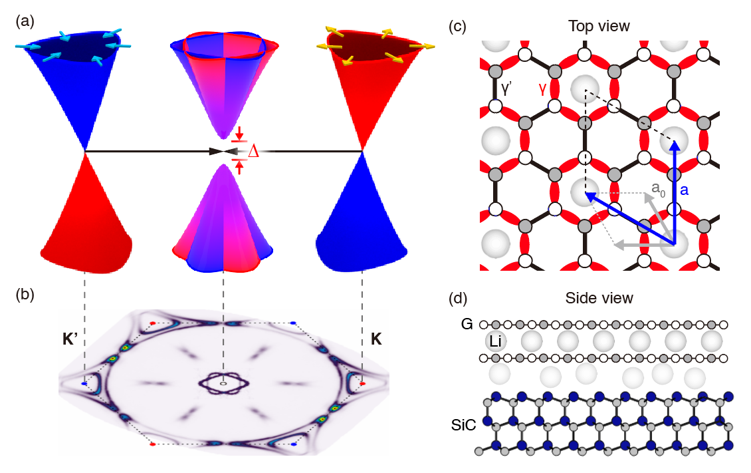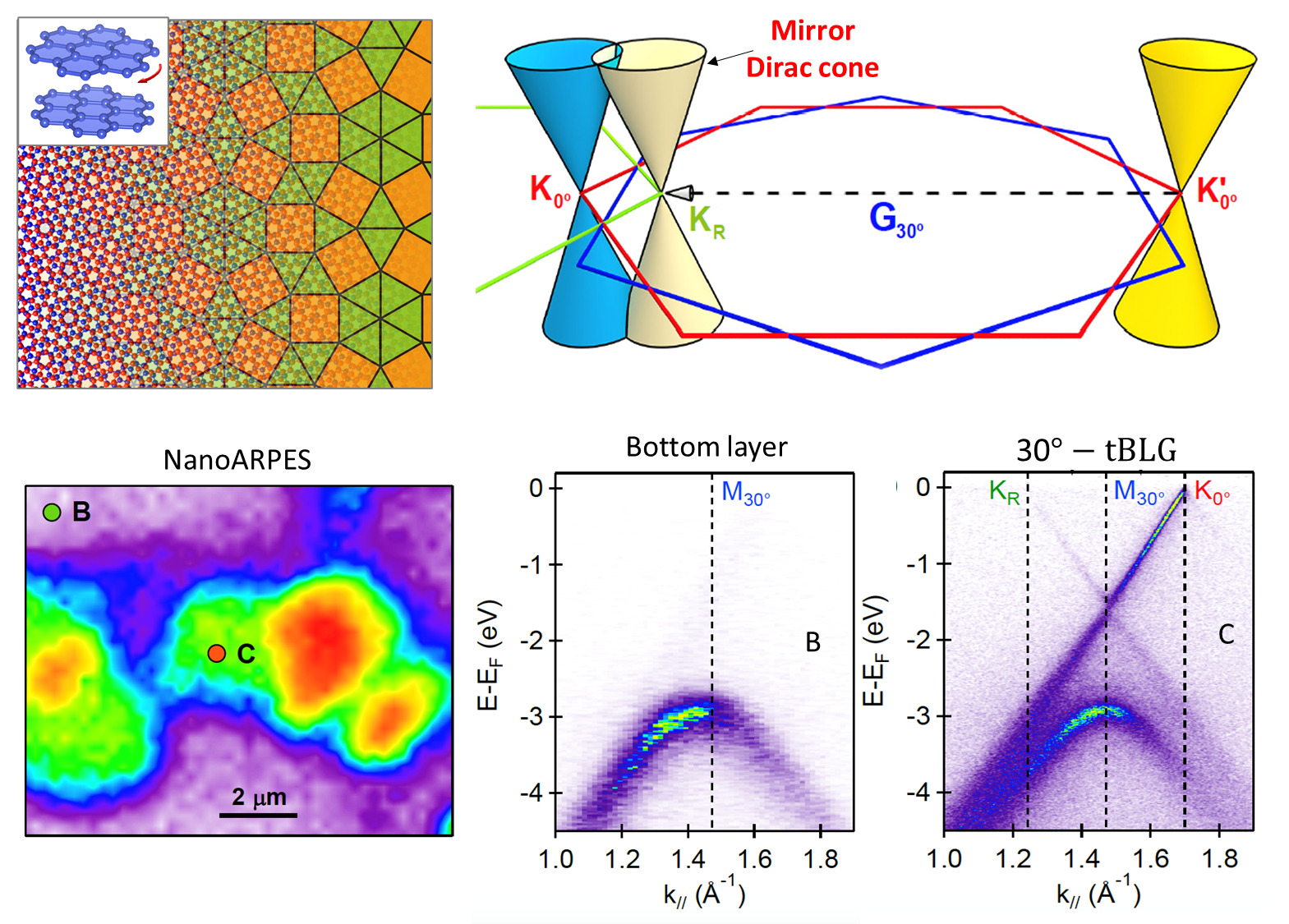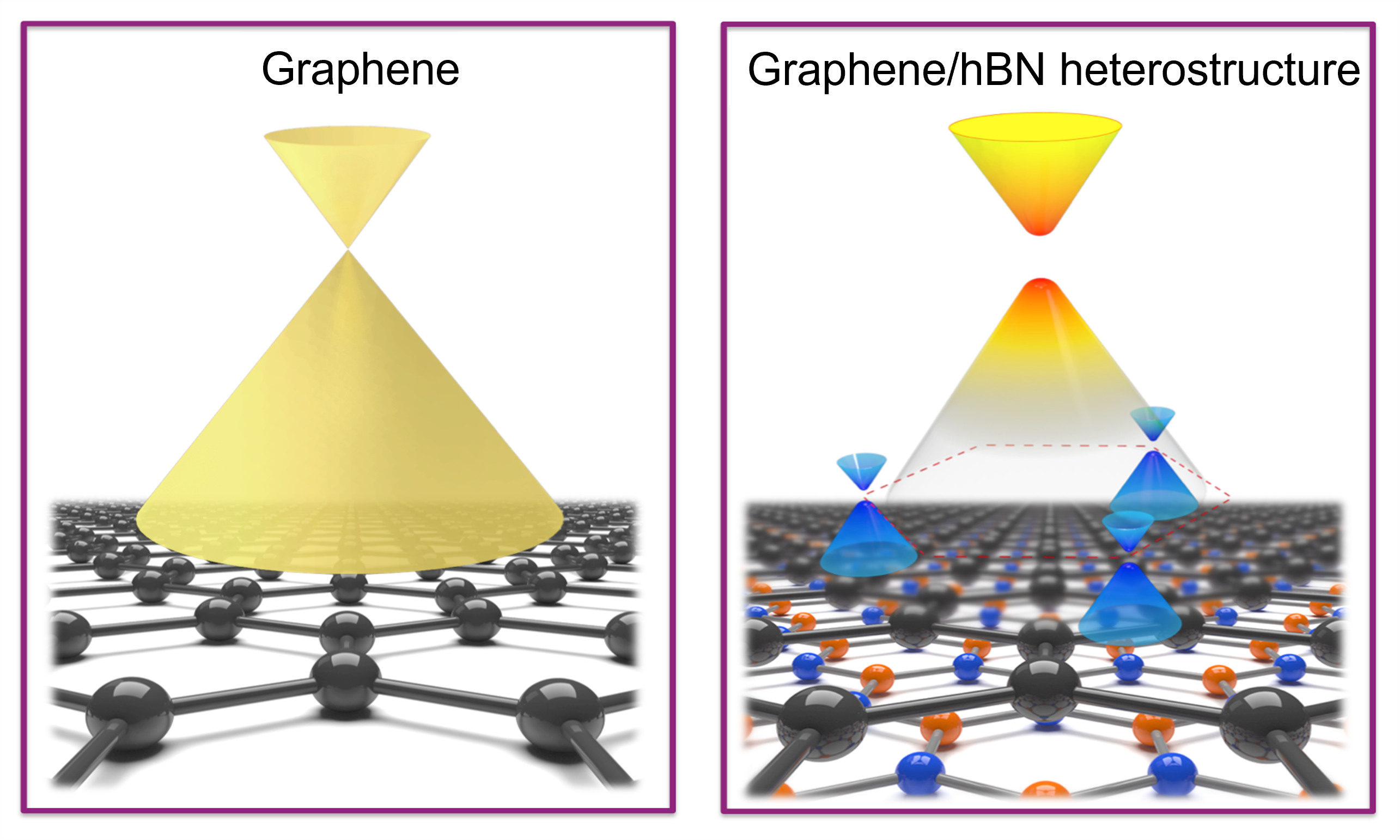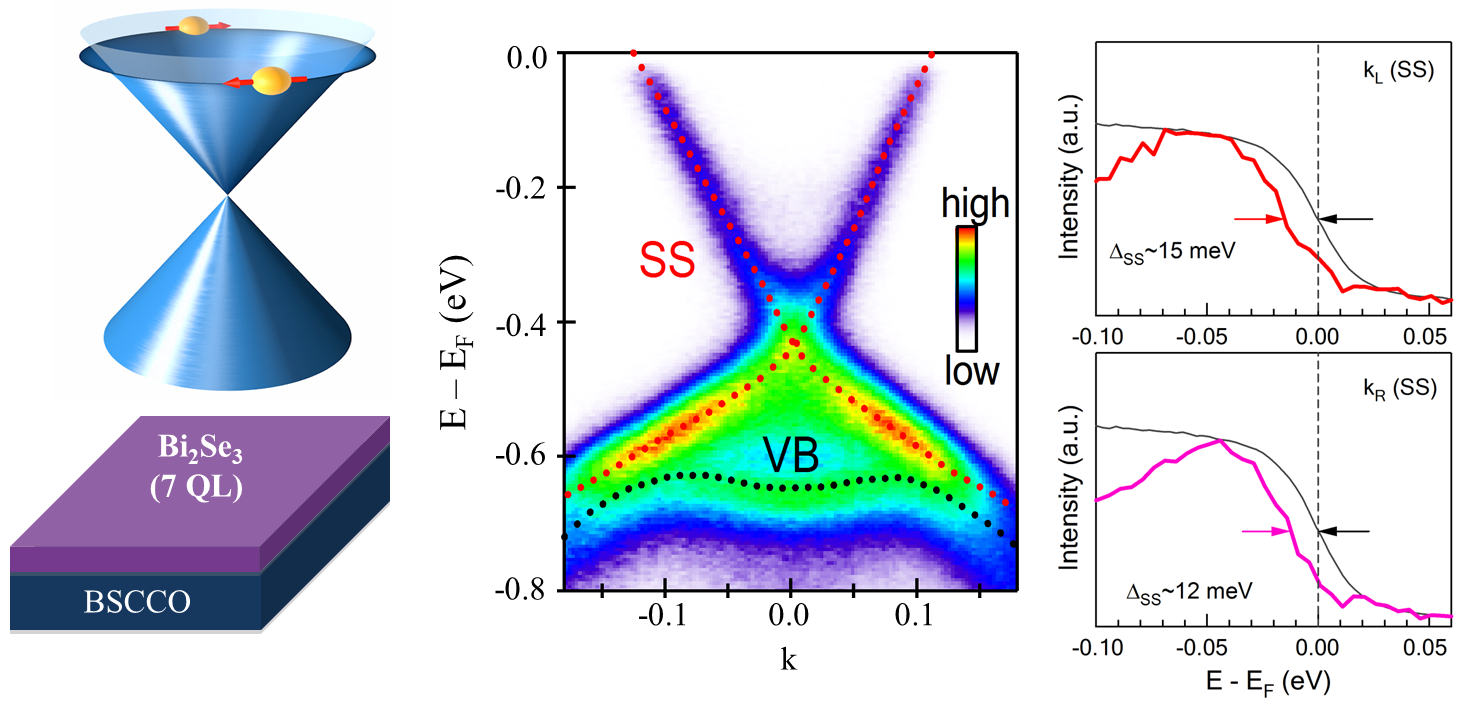Research / Heterostructures
>> Tailored Ising superconductivity by ionic intercalation
>> Experimental evidence of chiral symmetry breaking in a Kekulé-ordered graphene
>> Quasicrystal twisted bilayer graphene (QC-tBLG)
>> Gap opening and second-generation Dirac cones in graphene/hBN heterostructure
>> Superconducting proximity in Bi2Se3/BSCCO heterostructure
>> Tailored Ising superconductivity by ionic intercalation [Back To Top]

Reducing the dimensionality of layered materials can lead to new physical properties, however, this is often obtained at the expense of sacrificing other properties. For example, while Ising superconductivity with high upper in-plane critical field is observed in monolayer NbSe2, the superconducting temperature is significantly lower than bulk NbSe2. In this work, we reported a new experimental pathway for tailoring the properties of layered transition metals via ionic liquid cation intercalation. Using NbSe2 as an example, we show that such intercalation leads to larger interlayer spacing and weaker interlayer coupling, thereby reducing the dimensionality. More importantly, it shows Ising superconductivity and 2D electronic structure similar to monolayer NbSe2, while with a critical temperature similar to bulk NbSe2 and with improved stability than monolayer NbSe2. Our work suggests that ionic liquid cation intercalation can be used as an effective method for tuning the dimensionality and material properties, with the possibility to achieve tailored properties better than bulk and monolayer samples.
For more details, see Nat. Phys. 18, 1425–1430 (2022)
[To Overview]
>> Experimental evidence of chiral symmetry breaking in a Kekulé-ordered graphene [Back To Top]

Chiral symmetry breaking (CSB), which is induced by coupling of Dirac fermions with opposite chiralities, can induce a mass generation for fundamental particles and plays an important role in quantum field theory. The low energy excitations of graphene resemble massless Dirac fermions, and therefore graphene is an ideal solid state material for mimicking the chiral symmetry breaking. By intercalating Li into graphene, we induce a Kekulé order, which leads to intervalley coupling. Combing ARPES, STM and first principles calculation, we provide experimental evidence for CSB in Li-intercalated graphene. For more details, see Phys. Rev. Lett. 126, 206804 (2021). and also highlight “Shining a Light on Chiral Symmetry Breaking in Graphene” .

[To Overview]
>> Quasicrystal twisted bilayer graphene (QC-tBLG) [Back To Top]

Quasicrystals distinguish from crystals in that they have only the rotational symmetry but not the translational symmetry. By stacking two monolayer graphene crystals at a 30 degree twist angle, we are able to create a quasicrystal twisted bilayer graphene (QC-BLG) with twelve-fold rotational symmetry, similar to a dodecagonal quasicrystal. ARPES measurements show that in addition to the Dirac cones from the top and bottom graphene layers, the interlayer interaction leads to emergence of mirror Dirac cones, which can be explained by a generalized Umklapp scattering mechanism. For more details, see PNAS 115, 6928 (2018)
[To Overview]
>> Gap opening and second-generation Dirac cones in graphene/hBN heterostructure [Back To Top]

Graphene and hBN shows similar crystal structure yet with a 1.8% lattice mismatch. The moire potential in graphene/hBN modifies the graphene Dirac cone, leading to gap opening at the Dirac point and emergence of second-generation Dirac cones. Our ARPES results reveal the electronic structure engineering of graphene/h-BN heterostructure and highlights the important role of the inversion-asymmetric superlattice potential in the electronic structure of graphene/hBN. For more details, see Nat. Phys. 12, 1111-1115 (2016)
[To Overview]
>> Superconducting proximity in Bi2Se3/BSCCO heterostructure [Back To Top]


